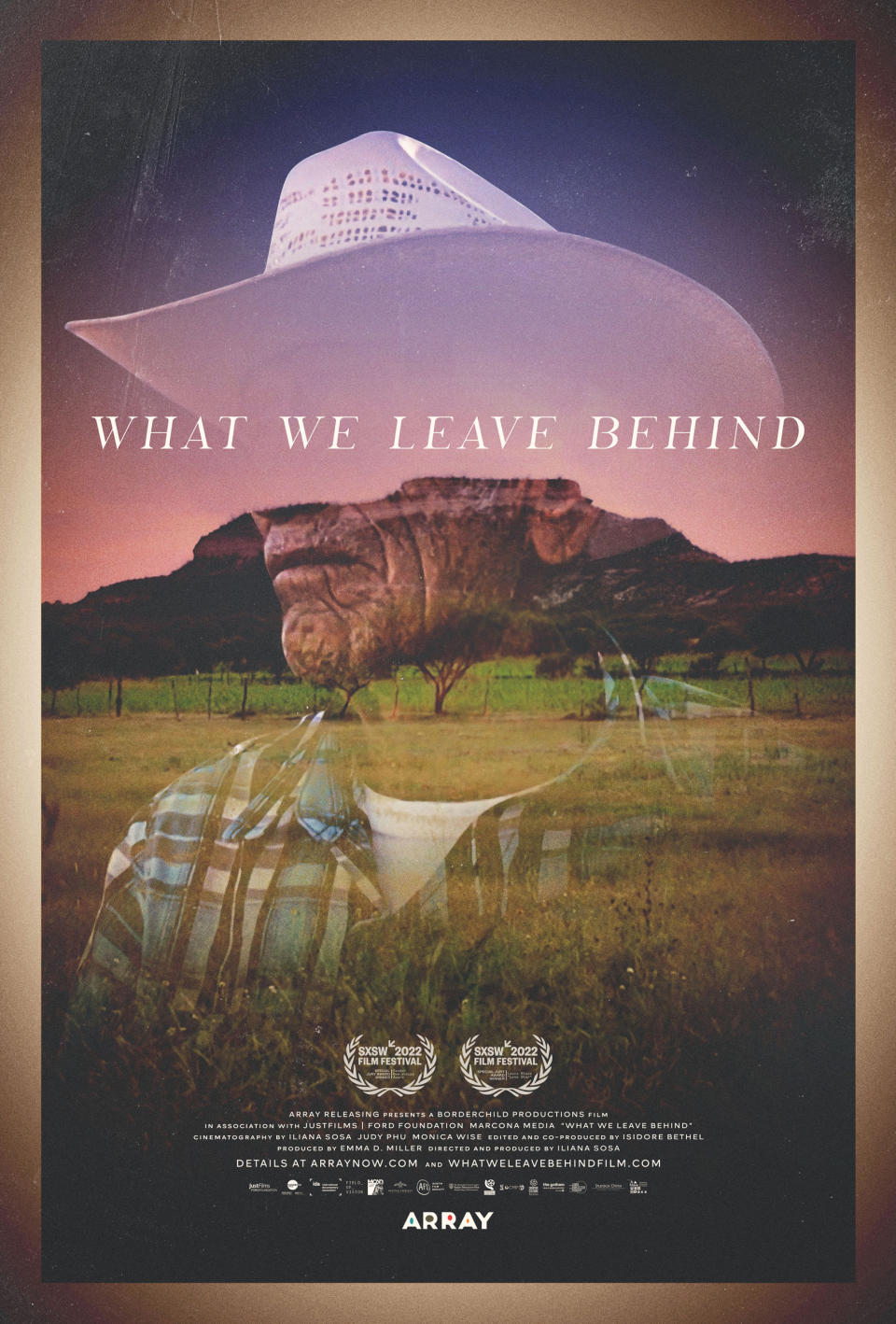Through a Mexican grandfather's story, the WWII-era Bracero program becomes living history
Iliana Sosa’s family lives on both sides of the U.S.-Mexico border. She remembers her grandfather, Julián Moreno, taking 13-hour bus rides every month from Durango in northwest Mexico to El Paso, Texas, where she grew up.
Now a filmmaker, Sosa has directed an award-winning documentary about her grandfather, “What We Leave Behind,” that premiered at the South By Southwest (SXSW) festival in March. The film will get a nationwide release on Netflix starting Friday.
"I wanted to document his work as a bracero and capture that oral history,” she said in an interview with NBC News. “So many braceros have already passed away. And their stories have also gone with them.”
Like Sosa’s grandfather, millions of Mexicans came to the U.S. through the Bracero program, a temporary work program that issued work permits between 1942 and 1964. It was initially created to deal with labor shortages from World War II when so many men had gone to war.
“What We Leave Behind” tells a very personal story about Sosa’s maternal grandfather, who after spending much of his life riding buses to the United States started building a house at age 89, in a plot of land next to his rural home in Mexico.
Viewers will see Sosa’s silver-haired grandfather wearing a white cowboy hat. On camera, he looks wrinkled, thin and resilient, made tough by a lifetime of work — he shovels dirt and carries wooden planks at the construction site of the new home.

At times the movie can be slow, compelling viewers to adapt to the rhythms of Moreno’s farm life. And as the new home goes up cinderblock by cinderblock, the camera also documents how his health is declining.
Sosa said that while “What We Leave Behind” began with the idea of documenting Moreno’s bracero past, it turned into a seven-year project that shows his connection to Mexico and how it shaped his frontier-like perspective.
“I think the way my grandfather saw Mexico was that this was his home, a very beautiful way of life, of appreciating time and life for what they are — they did what they did because it was what they were able to do,” she said.
On camera, Sosa describes her grandfather as a mysterious man who smoked a lot and brought her fudge and tamarind sweets during his visits throughout her childhood years. And she says that unraveling the mystery of his story also poses deep questions about her Mexican American identity.
“I really like to describe my identity as fluid and hybrid,” she said. “There’s a term called ‘nepantla,’ which means “in-betweenness.” It’s a Nahuatl word [a native language from Mexico and Central America] and it really resonates with me. I’ve been in between very different worlds, in different cultures and different spaces.”
Sosa is the daughter of Mexican immigrants, born and raised in El Paso, Texas. Both of her parents came over as undocumented immigrants when they were teenagers. Her mother, from Durango, was 14. Her father, from Mexico City, was 17. And she says her family’s tenacity and hard work planted the seeds for her success.
“I’m the first to go to college. I’m the first to go to film school and get a Master’s degree. I’m the first in my family to be an artist and to make my labor not from my hands,” she said. “Literally, my grandfather was a bracero and he worked as a farmer all his life. My mother, when she came to this country, she worked as a housekeeper and a nanny. My father has always worked as a server.”
Now, looking back on her life as the daughter of Mexican immigrants, a filmmaker and a professor, she says that telling the story of her grandfather building a house has helped her understand that being Mexican American can mean many things.
“I think the beauty of Latinidad in this country is that we do inhabit these different spaces. We can be all of these selves and that’s OK,” she said. “Home can mean more than one thing and more than one place.”
Follow NBC Latino on Facebook, Twitter and Instagram.
This article was originally published on NBCNews.com

